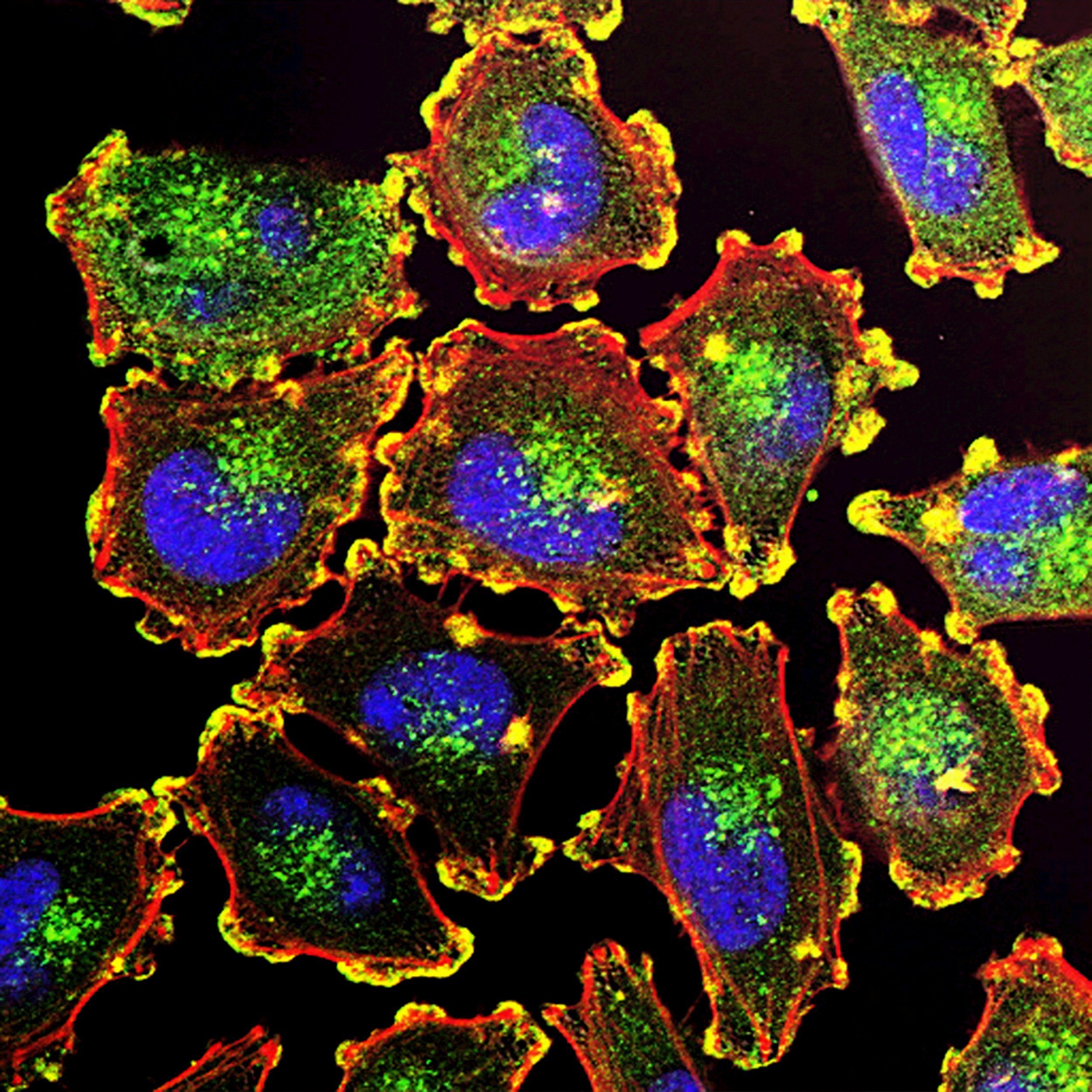AI Virtual Human Cell: Transforming Medicine and Biology

Image Credit: National Cancer Institute | Splash
Experts from Stanford University, Genentech, and the Chan Zuckerberg Initiative have announced plans to create the world's first AI-driven virtual human cell. This ambitious project aims to revolutionize our understanding of human biology and expedite medical research by simulating the intricate behaviours of human biomolecules, cells, and tissues.
[Read More: Leica AI: Aivia Revolutionizes Image Analysis in Biology]
Advancements in AI and Biological Data
The convergence of advanced artificial intelligence and the availability of extensive biological datasets has set the stage for this endeavour. Emma Lundberg, associate professor of bioengineering and pathology at Stanford, describes modeling human cells as the "holy grail of biology", emphasizing that AI enables direct learning from data, moving beyond traditional assumptions to uncover the emergent properties of complex biological systems.
[Read More: Evo AI Revolutionizes Genomics: Designing Proteins, CRISPR, and Synthetic Genomes]
Potential Impacts on Medical Research
The development of an AI-powered virtual cell holds significant promise for various fields:
Cancer Research: Scientists could model how specific mutations transform healthy cells into malignant ones, enhancing cancer understanding and treatment strategies.
Virology: Researchers might predict the effects of viruses on infected cells, aiding in the development of antiviral therapies.
Personalized Medicine: Physicians could test treatments on digital replicas of patients, known as "digital twins", leading to more tailored and effective healthcare solutions.
This approach could also facilitate in silico experimentation, allowing researchers to conduct experiments via computer simulations. Such a shift is expected to accelerate biological research and reduce the time and cost associated with developing new therapies.
[Read More: Revolution in Protein Design: How EvolutionaryScale's ESM3 Is Reshaping Biotech]
Challenges and the Call for Global Collaboration
Despite the potential benefits, creating an AI virtual cell presents substantial challenges, particularly in managing the vast amounts of biological data required. For instance, the National Institutes of Health's Short Read Archive contains over 14 petabytes of DNA sequencing data, underscoring the project's scale.
The project's success will depend on a global, collaborative effort involving experts across disciplines such as genetics, proteomics, and medical imaging. The authors advocate for open-access models to ensure the scientific community can utilize the virtual cell without restrictions, promoting widespread advancements in biomedical research.
[Read More: AI Unfolds Butterfly Secrets: A New Perspective on Evolutionary Science]
A Vision for the Future
While acknowledging that fully functional models may take a decade or more to develop, the researchers believe that the rapid expansion of AI capabilities and the growing availability of biological data make this the opportune moment to embark on this transformative project. The creation of an AI virtual cell could revolutionize our understanding of biology, leading to breakthroughs in disease treatment and the development of personalized medicine.
[Read More: AI Revolutionizes Drug Discovery: Speeding Up Breakthroughs and Cutting Costs!]
Source: Stanford News
We are your source for AI news and insights. Join us as we explore the future of AI and its impact on humanity, offering thoughtful analysis and fostering community dialogue.









